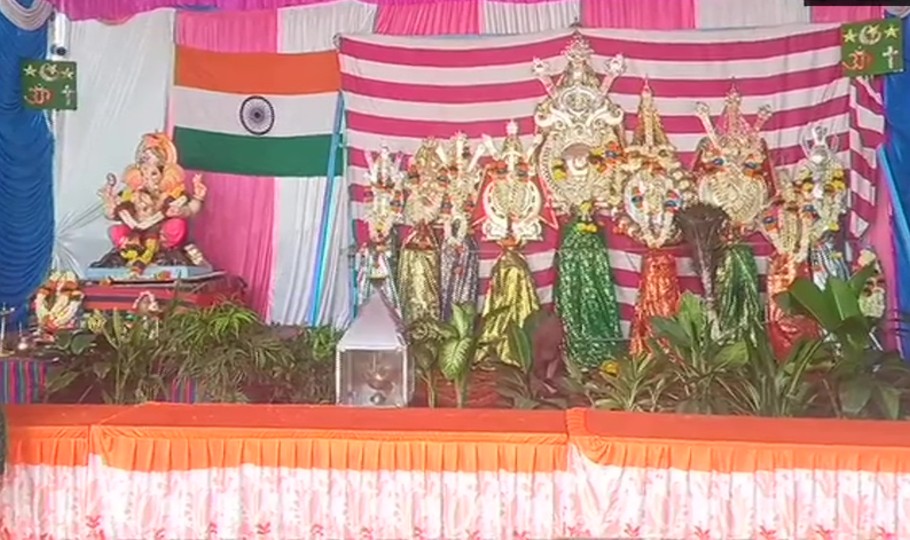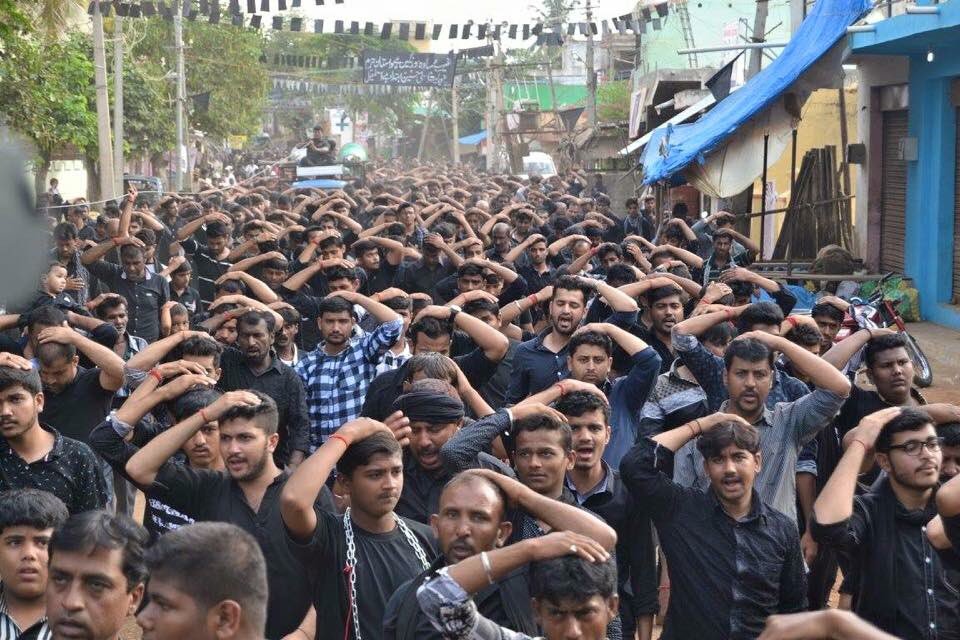
- Home
- News
- Analysis
- States
- Perspective
- Videos
- Education
- Entertainment
- Elections
- World Cup 2023
- Features
- Health
- Business
- Series
- Economy Series
- Earth Day
- Kashmir’s Frozen Turbulence
- India@75
- The legend of Ramjanmabhoomi
- Liberalisation@30
- How to tame a dragon
- Celebrating biodiversity
- Farm Matters
- 50 days of solitude
- Bringing Migrants Home
- Budget 2020
- Jharkhand Votes
- The Federal Investigates
- The Federal Impact
- Vanishing Sand
- Gandhi @ 150
- Andhra Today
- Field report
- Operation Gulmarg
- Pandemic @1 Mn in India
- The Federal Year-End
- The Zero Year
- Premium
- Science
- Brand studio
- Home
- NewsNews
- Analysis
- StatesStates
- PerspectivePerspective
- VideosVideos
- Entertainment
- ElectionsElections
- Sports
- Loading...
Sports - Features
- BusinessBusiness
- Premium
- Loading...
Premium

How the syncretic culture of North Karnataka remains strong despite BJP's rise
The syncretic culture of Hindus and Muslims celebrating each others’ festivals has been the norm for generations in several districts of north Karnataka.

Every year, on the ninth day of the Muharram, the first month in the Islamic calendar, Hindus and Muslims in Kurdi, a small village in Raichur district’s Manvi taluk, come together to mark the occasion. The village, home to several Sufi shrines, also sees dargahs take out processions along the streets during the 10 day-festival which is observed by Shia Muslims to mourn the demise of...
Every year, on the ninth day of the Muharram, the first month in the Islamic calendar, Hindus and Muslims in Kurdi, a small village in Raichur district’s Manvi taluk, come together to mark the occasion.
The village, home to several Sufi shrines, also sees dargahs take out processions along the streets during the 10 day-festival which is observed by Shia Muslims to mourn the demise of Hussain Ibn Ali, grandson of Prophet Muhammad, at the Karbala battle in 680 AD.
The religious carry panjas, symbolic flags depicting the martyrs, on procession cars that weave through the village, stopping at the houses of prominent villagers.
People paint their bodies to offer milk and sugar to the Pirs (Sufi saints). In some nearby villages, people perform tiger dances. The story of the prophet’s family and the Battle of Karbala dominate the folk literature presented during the festival.
Muharram is a time when communal harmony in the village is on display. For outsiders, it would seem like a village festival where all communities participate irrespective of their religion.
Many times, the Hindu festival of Ganesh Chaturthi, celebrating the birth of Lord Ganesha, coincides with Muharram. Interestingly, the Panjas of Muharram and the idols of Ganesha are placed adjacent to each other at several places.
Mohammed Hafeez, a panchayat member in the village, says all the villagers respect and participate in the inter-cultural practices that have been going on for generations.
Syncretic culture of north Karnataka
This syncretic culture of Hindus and Muslims celebrating each others’ festivals has been the norm for generations in several districts of north Karnataka.
Hafeez also says that once in five years they conduct a village fair (Devi Jatre) and that it would not happen without all the communities coming together. “Months before the fair, we hold an all-community meeting and only if everyone agrees to participate, we conduct the fair.”
There are a large number of dargahs and temples venerated equally by Hindus and Muslims in Karnataka.
In a show of inter-religious faith and harmony, in February this year, a Muslim man was appointed as a seer at Murugharajendra Mutt (Lingayat mutt) in north Karnataka’s Gadag district. The seer was trained by Lingayat religious leaders and followed Basavanna’s preachings.
Yashob S, a Scheduled Caste community member in Kurdi, says they participate in inter-religious festivals even during Eid and Urs among others.
“Because of COVID, there are restrictions. Otherwise, we all prepare sweet dishes, relish the food they cook and also visit Dargahs during Eid and Urs festival,” he says.

Syed Sikandar Hussain, who has witnessed these events for decades, says they do not distinguish between people belonging to different religions.
“During Eid, we break roza in the presence of some Hindus and also go door-to-door seeking elders’ blessing, cutting across religion,” he says.
In parts of Uttara Kannada and Belagavi region, on the day of the Urs, the annual festival in the month of March-April to commemorate the anniversary of the death of Sufi saint Moinuddin Chishti, people belonging to Siddi community perform their traditional dances, make merry and end the celebration with a grand meal along with Muslims.
A daily affair rooted in history
The syncretic culture of Hindus-Muslims in North Karnataka is visible not just during festivals but it also reflects in people’s daily lives. With people bearing names like Hussainappa, Fakirappa, Hasanappa and others, one may find it difficult to guess the person’s religion as they could either be Hindus or Muslims.
Muzaffar Azadi, professor of political science at the University of Mysore, attributes the syncretic culture to the Vachana movement led by Basavanna in the twelfth century and to the rulers of Bahmani Kingdom, who were devoid of religious strife and allowed each other’s cultures to take root and thrive at the same time.
While the Bahmani rulers made Gulbarga (Kalburagi) as its capital, they also gave importance to the architecture, arts, and literature of both communities. Dargahs became a place for political and religious discourse.
The Vachana movement advocated the practice of one god and sought to condemn caste-based rituals and discrimination that occurred during the Bahmani period and further enhanced the bonding between the communities.
This gave rise to a “fuzzy” community where identities are blurred, he says.
During the Siddaramaiah government, one of the ministers in charge of Kalburagi wanted to organise Bahmani Utsav (fest) to highlight the contribution of the Bahmani rulers to arts and culture in Karnataka. But the BJP thought the Congress was appeasing Muslims and gave it a communal color by opposing it, saying the Bahmanis were anti-Hindus.
Muharram 2019 at Raichur pic.twitter.com/P6a63lTLDW
— N.S Boseraju (@NsBoseraju) September 11, 2019
Rising threat of divide
While this syncretic culture remained untouched for ages, Azadi says that the bondage between communities is thinning as right-wing forces are trying hard to appropriate it in the mainland and coastal region. In some villages, the rise of Hindutva has reduced the participation of upper-caste Hindus in festivals of other communities.
While in the 1980s, the Hindutva right-wing gained strength in the coastal region by capitalising on the socio-economic crisis and creating fringe groups to cause disturbance, they tried to cause communal disharmony in Idgah Maidan in Hubballi over land rights in the 90s.
Later, a hill station known for syncretic culture ‘Baba Budangiri’ in Chikmagalur district became the target of the Hindutva forces. The VHP and Bajrang Dal tried to take over the Sufi shrine atop Bababudangiri from its traditional management held by the descendant Muslim family of the peer. The place is sometimes compared to the Ayodhya Babri Mosque-Ram Janambhoomi dispute.
Baba Budangiri represents a unique syncretic culture of Hindus and Muslims where people from both communities offer prayers in a cave-like structure. The place is believed to be the seat of Dattatreya Swami, the last avatar of Vishnu. It is also said to be the place where Sufi saint Hazrath Dada chose to meditate in 1005 AD. The hill is named after his disciple Baba Budan, who is buried with two other Sufis inside the cave.
BJP national general secretary CT Ravi, who emerged from the region, has been trying to rake up the Baba Budangiri issue time and again and preferring an out-of-court settlement to claim the place as belonging Hindu religious entity.
Azadi however feels that compared to northern states the syncretism is strong in Karnataka also because of the lower number and milder version of communal riots.
“Karnataka has seen relatively less communal tensions. And those which occur die down in one or two days and they are not used against development.”
In the initial stages of BJP’s rise to power, the region’s syncretism remained largely unaffected as the party rose under the current chief minister BS Yediyurappa, a Lingayat strongman, who is not considered a hardliner pushing the anti-Muslim agenda.
However, Azadi says this could be thinning out soon.
“In the context of elections, syncretism is replaced by caste identity where identity politics becomes primary. The social coalition that the BJP is trying to form by breaking Dalits, backward classes, and tribal groups, could weaken the very foundation of syncretic culture in North Karnataka,” he says.

